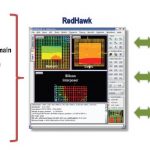One of the great devices in maker lore is the Polaroid 6500 Series Sonar Ranging Module. It was originally part of the autofocus system for their SX-70 cameras circa 1978, long before through-the-lens optical autofocus sensors were perfected. Back then, people couldn’t focus. Dr. Land thought he was teaching people to compose… Read More
Tag: intel
Intel: 2015 and Beyond?
Russ Fischer of Seeking Alpha fame just posted another article on Intel which, for a change, I agree wholeheartedly with except of course the part where he comments on the fabless semiconductor ecosystem, something he knows nothing about. But other than that it is definitely worth a read because as investments go Intel is certainly… Read More
Apples Versus Zebras
I have seen a couple of posts comparing the density of the Apple A8 to the Intel Core M and concluding that the TSMC 20nm process is denser than the Intel 14nm process. In one of the threads one of the posters likened this to comparing apples to oranges, I agree except I think it is even worse than that, I think it is more like comparing apples… Read More
IEDM Advanced CMOS Technology Platform Session
First I want recognize that IEDM once again provided all of the attendees with the proceedings as soon as we arrived at the conference, in fact the proceeding included every year of IEDM back to 1955. This is how a conference should be run! Anyone who read my blog about the SPIE Advanced Lithography Conference will know how frustrating… Read More
ANSYS Updates RedHawk for FinFET Nodes
Most designers are not using FinFETs yet, however the increased transistor density and power advantages they offer are compelling. Smaller feature sizes have been a consistent driver in semiconductor technology. Eventually the market will move more and more to FinFET processes, increasingly leaving behind planar transistors.… Read More
Lead, follow, or catch the next Silicon Valley wave
What does the IoT mean for the next wave of Silicon Valley innovators? Looking at the previous waves of semiconductor economic development and the doctrine of “creative destruction” holds clues as to how this one develops and who emerges as the new leaders.
Given seven decades of progress, it may seem semiconductor firms on top … Read More
IEDM: TSMC, Intel and IBM 14/16nm Processes
This week is IEDM. Three of the presentations today were by TSMC, Intel and IBM going over some of the details of their 14/16nm processes. They don’t provide the slides at IEDM, just the single page papers so this may end up being a somewhat random collection of facts.
TSMC were up first. They talked about the improvements that… Read More
Jean-Louis Gassée on Intel and Mobile
I came across a very interesting article/blog written over the weekend by Jean-Louis Gassée on Intel and mobile. It covers some similar ground to several of my blog posts on the topic but also has some new facts. And it has additional credibility since Jean-Louis was head of product development and worldwide marketing at Apple (pre-iPhone).… Read More
Intel has Another First for 14nm Production!
An interesting thing happened while I was researching a slide from Bill Holt’s “Advancing Moore’s Law” presentation at last month’s analyst meeting. Slide #19 mentioned that Intel was the first to use “air gap” dielectric spaces to improve performance in a digital logic flow for microprocessors. I know a certain foundry that … Read More
What Will Drive Smartphone Market Now?
Whenever a market matures, either it gets plagued by substitutes or it looks for complementary products or technologies which can fuel its maturation curve into further growth opportunities. While PCs and Notebooks got substituted by smartphones, there is no other device in foresight to substitute smartphones. The reason … Read More



